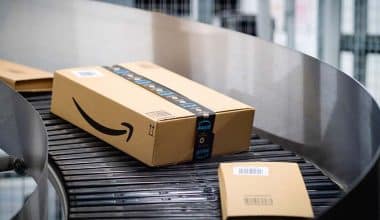Maintaining inventory control as a multichannel retailer, wholesaler, or e-commerce firm can be a demanding task. Yet, systems, methods, and technology are now available to assist businesses in streamlining their supply chain. You may efficiently and correctly track your merchandise with the help of inventory control systems.
This article will assist you by explaining what inventory control is, providing clear inventory control meaning examples, different forms of inventory control and their usefulness, as well as the benefits and problems of inventory control system. It will also offer inventory control suggestions and explore certain inventory control management systems and practices.
What is Inventory Control?
Inventory control, often known as stock control, refers to the systems and procedures used to manage inventory goods at a company’s warehouse. It tracks the movement and storage of items in a warehouse to assist firms in maintaining a sufficient and in good condition supply. Putting in place an inventory control system allows them to meet consumer requests while also increasing earnings.
Inventory control is an important component of an inventory management system. Warehouse managers and production planners should follow the following inventory control activities and procedures:
- Receiving, storing, and moving items
- Putting objects in strategic places
- Inventory item tracking and warehouse location
- Keeping track of product data and histories
- Checking the condition of stock goods
- Completing purchase orders with available inventory
- Including barcode scanners
- Creating rearrange reports
What Makes Inventory Control Important?
Here are some examples of why inventory control is important for your business so you can obtain a fundamental knowledge of its function.
#1. Quality Control
With an inventory management system, you may apply tighter quality control. You can better control quality if you can track and manage all aspects of your supply. The longer you keep inventory, the more likely it may be harmed. You can avoid this by ensuring that your warehouse stock is rotated.
You can monitor the quality of the stock you get from suppliers using inventory control strategies. How frequently do you get certain things returned? How frequently are those that are returned because they break or have other flaws? Seeing how products travel through your inventory might help you identify problems and eliminate write-offs.
#2. Organizational Control
You have organizational control over your business if you have inventory control. A well-organized stockroom allows you to manage your merchandise and make the most of your physical inventory investment. This part of inventory control is critical for knowing where your merchandise is and how quickly you can retrieve it.
For the smooth operation of your business, inventory control in terms of the stock organization is critical. It ensures that you have enough units to fulfill orders and keep as a backup. Good inventory management tactics will also assist you in avoiding dead stock and overstock. Safety stock serves as a buffer, lowering the likelihood of an item becoming out of supply. Inventory that does not sell is known as dead stock. That, in a nutshell, is why inventory control is essential.
#3. Accountancy precision
Maintaining an accurate inventory record is critical for asset management. It will also aid you if you are audited. Understanding what assets you have assists you to comprehend your overall spoilage and the value of your organization.
Your organization may be required by financial accounting laws and tax legislation to maintain a physical inventory account. In your inventory systems and accounting software, all stock should have the correct numbers and pricing. This ensures that your company’s accounting integrity is not called into question during audits.
How Do You Keep Inventory Costs Under Control?
Inventory control software facilitates the recording of stock, packaging, and shipping information in a single location, hence optimizing your company’s procurement process. Real-time stock movement updates can assist you in automating stock level control for accurate sales performance and inventory analytics. All of this contributes to inventory cost control.
Inventory Control Systems
Businesses can use a variety of inventory control systems and related methods. So, what types of inventory control do you require for your company?
Depending on the amount of your inventory and the operations of your business, each has advantages and disadvantages. Retailers’ needs may differ from those of a wholesaler, for example. Begin by defining your business goals and metrics in order to determine your present and future demands and select the best inventory control system.
Then, decide whether your company should:
#1. Use a spreadsheet.
A spreadsheet as a manual inventory control strategy works well for tiny organizations that don’t retain much stock or have a wide variety of inventory. While keeping a spreadsheet is less expensive than the other two options, it can be more difficult to manage inventory. Your team members, on the other hand, will not have to spend time learning how to use an automated system for inventory control.
While you may believe it gives you more control, manual inventory control via spreadsheet is significantly more prone to human mistakes and labor-intensive. Supply chain management may also be more difficult to maintain because an employee must keep track of several moving elements. Stock replenishment will also be more difficult to track in a manual system.
#2. Periodic Inventory System
Physical inventory counts are typically used in a periodic inventory system. When a physical count is performed, inventory information is updated on a regular basis. For firms that deal with huge volumes of inventory or frequent inventory moves, this form of the inventory control system is extremely time-consuming. Yet, inventory control strategies like these can be effective for small businesses with few orders.
The following formula is commonly used in periodic inventory:
COGS = (Starting Inventory + Purchases) – Closing Inventory.
This inventory control system is simple to set up and requires little knowledge. Yet, your inventory levels are rarely up to date, resulting in delays and significant write-offs. It also relies on inventory audits rather than a real-time automated system.
#3. Perpetual Inventory System
As a transaction occurs or fresh stock is obtained via technology solutions, perpetual inventory systems update your stock in real-time. Almost 72% of all retailers intend to implement real-time visibility in their supply chain using automation, sensors, and analytics. It makes inventory management strategies like Economic Order Quantity simple to implement (EOQ). EOQ ensures that inventory meets demand while reducing holding and storage expenses.
Perpetual systems provide greater inventory visibility than periodic systems. These inventory control system functionalities save the cost and time required for physical inventory counts.
What Are Some Real-World Examples of Inventory Control?
Strong inventory control can benefit your company in the following ways:
- During an audit, the computer system indicates that there should be 1000 pairs of sunglasses on the shelf, but there are only 980. What became of the others? Have they been stolen, or did the provider ship the incorrect quantity? As you investigate, you can change the system to reflect that only 980 pairs are available for purchase on your website, ensuring that buyers aren’t attempting to purchase something that doesn’t exist.
- While assessing stock levels, your inventory control manager sees that a specific sort of candy bar has been sitting on the shelf for quite some time, and the expiration date is approaching. After this is identified, the corporation may decide to sell the items at a discount or bundle them with another popular confectionery to move the stock.
- Another example is store inventory control, which entails monitoring stock levels, product quality, and availability in your physical and e-commerce stores. It’s important that your inventory management software synchronizes data across channels so you can immediately detect if any items are running short or approaching expiration. A POS system in a physical store will instantaneously inform personnel whether or not an item is accessible from another location.
Techniques for Inventory Control to Consider
A complex business is inventory control. There is no one method to do it correctly, and different inventory control techniques will work for different firms and scenarios. These are a few popular inventory control approaches and considerations to consider:
#1. JIT (Just in Time)
This method, pioneered by Toyota in the 1970s, involves corporations maintaining as little inventory as possible. Rather than purchasing inventory in advance and keeping it on your shelves, you just buy it when it’s needed—and the shipment arrives “just in time” to meet demand.
This allows you to run smaller warehouses (lowering cost and employee wages), spend less on inventory, and avoid the hassles that come with excess stock. But, if there are any delays, you run the risk of a stockout because you won’t have any safety stock as a backup.
#2. Bulk Shipments
Whether you’re ordering from a supplier or sending them out to your network of warehouses, distribution centers, or storefronts, buying and delivering products in bulk is almost always cheaper. When purchasing things in bulk, you must be confident that they will sell or you will end up with extra stock.
This strategy is best suited for commodities with consistent demand and long shelf life. It requires more money upfront, therefore be sure that this is offset by lower prices. Bulk shipments may also be more expensive in terms of container space, but there will be fewer shipments to send out.
#3. Dropshipping
Dropshipping is a method of saving money by eliminating the middleman. Rather than collecting items from suppliers or manufacturers and holding them in your warehouse, you collaborate with a partner (the drop shipper) that delivers orders directly to your clients.
Your company is in charge of processing customer orders and passing the information on to the drop shipper, but you never see or handle the things you sell. This lowers your overhead, but it implies you don’t have control over quality or delivery speed. And if there is an issue, customers will still complain to you!
#4. Consignment
When you make an order with a supplier, they deliver the items to you, but you don’t pay them until the goods are sold. The supplier is referred to as the “consignor,” and your company is referred to as the “consignee” under this technique.
If you do not sell the products, you may return them to the consignor without penalty. It’s an excellent approach to test out new product lines when you’re not sure how well they’ll sell without investing a huge sum of money upfront. The consignor carries the majority of the risk.
#5. Cross-docking
This is another method for reducing the amount of inventory you keep or eliminating the need for storage entirely. Goods arrive from a supplier and are examined, sorted, and prepared for transportation at a dedicated cross-docking facility. They are then put onto delivery cars and quickly sent.
If you run your company fully on a cross-docking strategy, you’ll just require minimal space for receiving and reloading. You could even limit this strategy to specific products. Items such as those advertised for same-day delivery or with an extremely limited shelf life are examples.
#6. Cycles Counting
The majority of retailers despise full stock takes. They are time-consuming, and tedious, and pull personnel away from other responsibilities. Your actual store may even have to close for the day. Cycle counting, in which you count little amounts of inventory on a regular basis, is far more convenient.
You may verify that the real stock matches the quantities recorded in your inventory management software by inspecting only one type of product at a time. If it doesn’t, you’ll know there’s an issue and can do a more thorough audit. Cycle counting does not eliminate the need for a comprehensive stock take; it simply reduces the frequency with which it is performed.
Methods of Inventory Control and Best Practices
Inventory control has an impact on your inbound and outgoing logistics procedures, as well as your sales, operations, customer happiness, and bottom line. Having an inventory control system in place allows you to fine-tune your operations and determine the ideal buy-order cadence. For effective inventory control, use these best practices.
#1. Implement real-time inventory tracking
Inventory tracking is the practice of keeping an eye on stock levels and locating specific products in a warehouse. Inventory tracking must be done in real-time so that you know how much product can be dispatched if a customer orders an item today, can make quick decisions if units need to be sent somewhere else, and can convey any delays if things are out of stock. Every week, it saves me hours on Excel spreadsheets, and I can raise a PO in minutes instead of hours.
#2. Determine ordering points
Reorder points define the stock level at which you must order additional inventory to avoid stockouts. This is done for each individual SKU since some products will sell well while others will not. Less manual monitoring and more time ordering result from automated re-ordering.
#3. Implement quality control
Order quality control assists you in staying on top of suppliers, monitoring each batch of inventory, making smarter decisions about future sales orders, keeping customers satisfied, and meeting any regulatory requirements. Quality control is greatly simplified by inventory control. You can respond to a product recall if you know exactly how many units you have and where each unit of inventory is stored. You can also use cross-referencing to ensure that your data correspond to actuals.
#4. Identify stocked and non-stocked products.
Inventory optimization is important whether you run a seasonal business or a high-growth brand because your inventory demands alter throughout the year. For example, an apparel manufacturer is unlikely to carry winter coats in early summer because it would be inefficient. Certain apparel items, such as jeans and t-shirts, may, nevertheless, require a year-round stocking. Non-stocked items, or those that will be sold on an irregular basis, will necessitate a different inventory control procedure.
Not all SKUs are the same and will not require the same quantities or replenishment as others. You can even discover that specific SKUs are costing you a lot of money throughout the supply chain while bringing in very little revenue.
#5. Implement zoning
If you keep order fulfillment in-house (rather than outsourcing it), you will need to invest in infrastructure to scale your warehouse for improved efficiencies. When you have a large number of SKUs and a broad product catalog, zoning might be important to keep your products organized and easy to find.
The manner in which products are stored, the structure of the warehouse, and the proximity of particular items all have an impact on operations, picking lists, and productivity. Zoning allows for the designation of specific regions, such as those requiring refrigeration, storing hazardous chemicals or dangerous items, dividing the same product by lot number or expiration date, or simply keeping SKUs that are frequently grouped or purchased next to one another.
#6. Conduct regular audits
Inventory control allows you to audit inventory in a streamlined manner, allowing you to uncover any issues sooner or before they emerge. With a well-organized environment, meticulous record-keeping, and inventory management software, you can audit and automate stock levels on a regular basis for improved inventory control.
Typical Inventory Control Challenges
Chaos can occur in any situation where there is a lack of control. The most typical inventory control issues to be aware of are listed below.
#1. Absence of visibility
Without knowing where your inventory is physically located, how many units you have on hand, and what you’ve sold across each online and offline channel can cause substantial bottlenecks in your supply chain.
Many brands handle inventory blindly in the absence of real-time unit counts, integrated systems, and a structured management system, resulting in over-selling and stockouts. This can also prohibit you from reordering inventory from your manufacturer or supplier on schedule, or even knowing when it will arrive.
#2. Inadequate traceability
Poor inventory control not only reduces stock transparency, but may also pose more serious threats to health and product safety. Products that can damage people (especially those that can be eaten or ingested) may be difficult to trace in the case of a product recall or contamination issue if control procedures such as lot numbers are not used.
This can have major consequences for consumers as well as legal issues for your company. Inventory control via lot monitoring also assists you in staying organized by recognizing which products you want to ship out first, such as those with the closest expiration date or the oldest branding.
#3. The more you have, the more difficult it is to control.
Small businesses that can accommodate inventory in their own houses frequently lack the proper inventory control systems, but when a business grows and buys more inventory, it may become more difficult to manage.
The faster you turn over inventory and the more units you need, the more frequently you replenish it.
The more you extend your product line and the more SKUs you have, the more difficult it is to keep track of everything.
Of course, having more inventory does not always result in increased sales, profit, or a stronger return on investment. Each SKU needs its own storage, yet they don’t all turn over at the same rate. Being able to track simple inventory KPIs might help you gain better control over your inventory, leading to unexpected discoveries.
Conclusion
Efficient inventory control is critical for any organization, from Amazon to a freshly created brand. It enables you to improve your cash flow and save money on inventory control. You can establish an inventory control plan that tracks your assets in real time by using automated inventory control software systems and inventory control strategies. Providing you with visibility and control over your inventory.
Even if your company is tiny, you have the option of using a periodic or perpetual inventory system. A perpetual inventory system, on the other hand, is unquestionably a better alternative if you have a significant volume of stock or more sophisticated operations. Finally, to round up your retail tech stack, look into the best inventory system that can be smoothly integrated with the rest of your company’s activities.
Related Articles
- MANAGEMENT CONTROL SYSTEMS: Types, Features, and Examples
- Best 15+ INVENTORY SYSTEMS FOR SMALL BUSINESS in 2023 (+ Free Options)
- BEST APPS FOR INVENTORY MANAGEMENT IN 2023
- How To Calculate Average Inventory- A complete Step-by-Step Guide
- BUSINESS INVENTORY MANAGEMENT: Best Practices In 2023






